Since my review of the Sony SBH80 earlier this year, I’ve been repeatedly asked for more wireless headphone recommendations. Because I think the wireless market is an important one and a couple of quick recommendations for the holiday season might be of use to our readers, here is a brief roundup of the Bluetooth headphones I’ve tried to date.
Note: for an introduction to Bluetooth headphone audio and a brief overview of Bluetooth audio profiles, codecs, and other technologies, see my article on Bluetooth audio in headphones here.
The summary table for this roundup is below. Explanations for some of the columns are found underneath and the best performer in each is boldfaced.
| Model | Type | Battery Life | aptX | Range | Build | Mic | Comfort | Sound | Sound Signature | Street Price | Recommended |
| SOUL Electronics SV3 | On-Ear | 12 | Yes | Excellent | Good | Good | Average | Good | Bass-heavy | $30 | Yes* |
| MEElectronics AF32 | On-Ear | 12 | No | Excellent | Good | Good | Excellent | Good | Balanced | $50 | Yes |
| Sony SBH60 | On-Ear | 13 | No | Excellent | Excellent | Good | Average | Good | Balanced | $80 | Yes |
| Sennheiser MM400 | On-Ear | 10 | No | Excellent | Good | Good | Average | Good | Balanced | $130 | Yes* |
| Photive X-Bass | Over-Ear | 12 | No | Good | Average | Good | Average | Average | Bass-heavy | $60 | No |
| MEElectronics Matrix 2 | Over-Ear | 22 | Yes | Excellent | Good | Good | Good | Excellent | Balanced | $90 | Yes |
| House of Marley Liberate XLBT | Over-Ear | 15 | Yes | Excellent | Excellent | Good | Average | Good | Bass-heavy | $140 | Yes* |
| JAM Transit | In-Ear | 6 | No | Excellent | Good | Good | Good | Average | Bass-heavy | $40 | No |
| Anker Light Hi-Fi | In-Ear | 5 | Yes | Poor | Good | Poor | Average | Good | V-shaped | $60 | No |
| Plantronics BackBeat GO2 | In-Ear | 5 | No | Excellent | Good | Excellent | Average | Good | Balanced | $65 | Yes |
| Sony SBH80 | In-Ear (wearable) | 6 | Yes | Good | Good | Excellent | Excellent | Excellent | Warm | $100 | Yes |
*Recommended for specific type of use. See review for more info.
Type: form factor (on-ear, over-ear, in-ear, earbud)
Battery life: battery life for music playback in hours (manufacturer-reported)
aptX: support for aptX Bluetooth audio codec (yes/no)
Range: subjective evaluation of operating range in my everyday applications (pretty much all manufacturers claim the 10m (30ft) of range standard for class 2 Bluetooth devices, but real-life range varies quite a bit)
Mic: microphone quality (volume and clarity) for phone calls
Sound Signature: a (grossly simplified) sound signature characteristic. For more info, see our earphone buyer’s guide by sound signature
Price: approximate street price in USD at time of review
On-Ear
SOUL Electronics SV3 Volt ($30 from amazon.com; $149.99 MSRP)
Specifications
Type: on-ear | Battery life: 12hrs | Control scheme: 3-button
BT version: 4.0 | aptX/AAC: aptX | NFC: No | Multipoint: No | Sweat resistance: No
Build quality: Good – maybe not solid enough for the $150 MSRP, but not bad at all. The construction – especially the heavy plastics and rubber headband pad – reminds me of the original Beats by Dre Solo.
Noise isolation: Average
Comfort: Average – the SV3 is similar in size to the MEElectronics AF32, but heavier and a lot tighter on the head. The end result is that, like the Sony SBH60, it’s comfortable for only a few hours.
Range: Excellent
Mic quality: Good – the dual mics have good voice pick-up but also seem to transmit more outside noise than other dual-mic systems
Sound quality: Good – The most bass-heavy of the on-ear sets tested, the SV3 is just shy of the bass power of the larger Photive X-Bass. It delivers excellent bass depth but still suffers from some mid-bass bloat. Tonally, the SV3 is quite warm. The mids are more forward than expected, but still not very clear (compared to the Sony SBH60 and MEElectronics AF32), which creates an odd situation where the midrange is not recessed, but still sounds somewhat distant and veiled. The top end is smooth while soundstaging is average at best.
Final thoughts: The biggest issue for me aside from the bass-heavy, somewhat bloated sound is the tight fit and extra weight compared to the other on-ears tested, which sacrifices comfort. The construction is pretty solid but I doubt it’ll be more durable than the Sony SBH60 in the long run. I also found the SV3 to be the pickiest in terms of Bluetooth operation – for instance, I was not able to put it in pairing mode if a previously-paired device was in the area, and it often took two tries for the headset to be discovered (none of the others had these problems). Bottom line – if you want enhanced bass, the SV3 is a good buy, especially at the current rock-bottom pricing; otherwise the on-ear Sony and MEElectronics sets offer more of both audio quality and overall versatility.
Verdict: (6/10) Recommended*
*Recommended as an enhanced-bass on-ear headphone; not recommended for those in search of balanced sound, comfort
MEElectronics AF32 ($50 from amazon.com; $99.99 MSRP)
Specifications
Type: on-ear | Battery life: 12hrs | Control scheme: 5-button
BT version: 2.1 | aptX/AAC: No | NFC: No | Multipoint: No | Sweat resistance: No
Build quality: Good
Noise isolation: Poor – low isolation due to the soft pads and relaxed fit
Comfort: Excellent – the light weight and soft oval pads make these the comfiest of the sets tested here and among the most comfortable on-ears I’ve tried, period
Range: Excellent
Mic quality: Good
Sound quality: Good – slightly warm tonality, smooth but not thick-sounding or dark. The overall sound of the AF32 is just a hair v-shaped with crisp treble. It is not as refined overall as the higher-end Matrix2, but still impressive, especially in that it is both forgiving and clear.
Final thoughts: The two Bluetooth on-ears I’ve enjoyed most so far are these and Sony SBH60. The AF32 has an advantage in comfort and offers a more crisp, less mid-focused sound than the SBH60, while the Sony has a more robust construction and even better wireless range. Aside from being the most comfortable of the bunch, the AF32’s greatest strength is that it doesn’t have any real weaknesses in sound or usability – my least favorite aspect of it is probably the proprietary charging cable.
Verdict: (8/10) Recommended
Sony SBH60 ($80 from amazon.com)
Specifications
Type: on-ear | Battery life: 13hrs | Control scheme: 4-button
BT version: 2.1 | aptX/AAC: No | NFC: Yes | Multipoint: No | Sweat resistance: No
Build quality: Excellent – the unit feels very well put-together and with such a simple design, there’s just not much to go wrong
Noise isolation: Poor – small cups and lack of flexibility limit noise isolation
Comfort: Average – the minimalist design results in a fairly rigid structure. The earcups don’t pivot, so while very lightweight, the SBH60, like the SOUL SV3, is only comfortable for 2-3 hours at a time.
Range: Excellent – the best among all of the wireless headphones I’ve tried
Mic quality: Good – not quite as good as with the in-ear SBH80, but didn’t draw any complaints
Sound quality: Neutral, somewhat mid-focused sound signature sacrifices a bit of clarity for thickness but sounds good, especially for the price. The performance is comparable to the more expensive Sennheiser MM400 in not having the greatest bass depth, treble sparkle, or overall resolution, but presenting a comfortable, balanced sound with no real flaws.
Final thoughts: The Sony SBH60 is a small and extremely lightweight wireless headset. While it doesn’t fold, the compact, minimalist design provides a very solid feel. It can be paired via NFC and also has the longest range of all the headphones tested, resulting in the most drama-free Bluetooth operation even beyond the standard 30 feet. There are a few nitpicks – the battery life feels a little shorter than 13 hours (I consistently got less use out of it than the MEElectronics AF32) and the power button is tough to press without obscuring the adjacent power light, but these concessions make sense for such a tiny wireless headphone. For me the biggest downside to the SBH60 is comfort – the structure is really not flexible enough to provide a great fit past the first 2-3 hours of use. That said, the SBH60 is still the most compact and arguably the most convenient headphone here, with balanced sound and amazing range to boot.
Verdict: (8/10) Recommended
Sennheiser MM400 ($140 from amazon.com / discontinued; $269.95 MSRP)
Note: While not a current model, the MM400 was my first proper Bluetooth headset and is included as a benchmark to see how far Bluetooth headphones have come.
Specifications
Type: on-ear | Battery life: 10hrs | Control scheme: 6-button
BT version: 2.1 | aptX/AAC: No | NFC: No | Multipoint: No | Sweat Resistance: No
Build quality: Good
Noise isolation: Average
Comfort: Average – the on-ear design is flexible but clamps tightly. Sennheiser’s similarly-sized wired model – the PX200-II – is more comfortable
Range: Excellent
Mic quality: Good
Sound quality: Good – good clarity, a little lacking at either end of the spectrum with rather punchy mid-bass and small-ish soundstage. It’s the same general sound signature as the MEElectronics Matrix2, but without the absolute clarity, balance, and resolution of the over-ear MEElectronics can, not to mention soundstaging. There’s nothing really wrong with the way the MM400 sounds, but considering the high MSRP I can see why early Bluetooth headphones to a bad rap for sound quality per dollar.
Final thoughts: The Sennheiser MM400 is a competent but outdated Bluetooth set that doesn’t offer much of anything over the current crop of <$100 wireless headphones. One cool and unique feature is the user-replaceable battery, but it is proprietary and replacements are pricy. All in all, the MM400 is not a bad product by any means but just doesn’t differentiate itself from more inexpensive sets at this point in time.
Verdict: (7/10) Recommended*
*Recommended in the absence of lower-priced options such as the MEElectronics AF32 and Sony SBH60
Over-Ear
Photive X-Bass PH-BTX6 ($60 from Amazon.com; MSRP: $129.95)
Specifications
Type: over-ear | Battery life: 12hrs | Control scheme: 3-button
BT version: 3.0 | aptX/AAC: No | NFC: No | Multipoint: No | Sweat resistance: No
Build quality: Average – I liked the way the X-Bass looks, but up close the design and build are just not very refined – some of the edges are quite sharp and there’s not enough flexibility in the structure for good wearing comfort.
Noise isolation: Average
Comfort: Average – While the X-Bass has larger, more spacious earcups than the pricier MEElectronics Matrix2, there is simply not enough flexibility to the structure for a comfortable fit. If the cups could pivot, that would have helped but as is I found the fit sub-par for an over-ear.
Range: Good
Mic quality: Good
Sound quality: Average – Bass is the name of the game here, but while bass quantity is plentiful, control lags behind the other bass-heavy headphones tested – the Soul SV3 and House of Marley Liberate XLBT. The sound is warm and soft, lacking in both balance and crispness. Overall, it’s the worst-sounding headphone here – there’s too much muddiness in the midrange and the presentation is too congested due to the excessive, uncontrolled bass.
Final thoughts: Though the X-Bass is by far the most inexpensive wireless over-ear set I’ve tested, it’s a tough one to recommend. The worst part is the sound, but the construction and fit didn’t impress me, either. Those who can afford the House of Marley Liberate XLBT should consider that as a better bass-heavy wireless headphone; otherwise, the similarly-priced SOUL SV3 still offers better performance than the X-Bass, albeit in an on-ear form factor.
Verdict: (5/10) Not recommended
MEElectronics Matrix2 AF62 ($90 from amazon.com; MSRP $149.99)
Specifications
Type: over-ear | Battery life: 22hrs | Control scheme: 6-button
BT version: 4.0 | aptX/AAC: Yes (both) | NFC: Yes | Multipoint: No | Sweat resistance: No
Build quality: Good – not the best-looking or feeling headphone (compared to the House of Marley Liberate XLBT it feels somewhat cheap) but the structure is sturdy enough and the finish is fairly refined, at least next to the Photive X-Bass
Noise isolation: Average
Comfort: Good – the Matrix2 is on the smaller side for an over-ear can but is lightweight and doesn’t clamp very hard. The earcups pivot, which helps keep the headphones comfortable for extended listening sessions
Range: Excellent
Mic quality: Good
Sound quality: Excellent – sound is where the Matrix2 shines. With support for both aptX and AAC Bluetooth audio codecs and a balanced, punchy sound signature, the Matrix2 can easily keep up with wired cans in its price range. Tonally it is quite neutral, with a slight mid-bass boost for some added punch and mostly smooth – but not dark – treble. Soundstaging is pretty good, too – the Matrix2 presents an uncongested sonic image and is both wider and airier than the others tested here.
Final thoughts: With lots of Bluetooth features and a clear, balanced sound, the Matrix2 is the best-sounding wireless headphone I’ve tried so far. There’s also something to be said for its versatility. For instance, unlike the other cans tested, using the wired 3.5mm jack on the Matrix2 does not turn off or mute the Bluetooth function. Battery life is great as well – with a couple of the other cans I felt that it was shorter than advertised; here I feel it’s longer. In the 3-4 weeks I used these cans (quite heavily at that), I can only remember charging them once. Cons include the smallish size for an over-ear can, plasticky build compared to something like the Marley Liberate XLBT, and lack of noise isolation (the Matrix2 fares better compared to the on-ear models but won’t be much use on a plane or subway). Also, as with the Liberate XLBT, the unconventional button layout took some time to get used to.
Verdict (9/10): Highly recommended
House of Marley Liberate XLBT ($140 from Amazon.com; MSRP $199.99)
Specifications
Type: over-ear | Battery life: 15 hrs | Control scheme: 6-button
BT version: – | aptX/AAC: Both | NFC: No | Multipoint: No | Sweat resistance: No
Build quality: Excellent – The XLBT is by far the most well-made headphone here, with the best materials, hinges, and adjustments. The combination of metal, wood, and canvas gives the headphones a premium look and feel that tops not just the other Bluetooth headphones I’ve tried, but most other headphones, period.
Noise isolation: Good – the closed-back design of the XLBT provides the best isolation of the non-in-ear sets
Comfort: Average –Padding is quite ample but the cups have the same limitation as those of the Matrix2 – they won’t be over-ear for everyone. That, combined with a lack of flexibility in the metal structure and greater weight makes the Liberate XLBT less comfortable overall compared to the Matrix2.
Range: Excellent
Mic quality: Good
Sound quality: Good – the Liberate is a bass-heavy headphone, and a significantly better one than the Photive X-Bass and SOUL SV3. The midrange and treble are more neutral and natural, and less warm and muffled. Interestingly, the mids are actually more recesed compared to the SV3, but still less veiled. Soundstaging is also not atrocious – the presentation is wider and less congested compared to the other enhanced-bass sets.
However, the Liberate XLBT is also more expensive by a good amount and still tends to get somewhat overwhelmed by its own bass. There’s just not enough upper midrange and treble energy to provide the kind of crisp, detailed sound and airy presentation delivered by the more balanced Matrix2.
Final thoughts: The House of Marley Liberate XLBT is the priciest headphone tested and shines in construction quality and ease of use. While it lacks some Bluetooth features such as the NFC connectivity of the Matrix2 and the Multipoint of the Sony SBH80, it’s got some pretty cool tricks of its own. There is a battery level indicator in the form of four lights next to the power button – a surprisingly handy feature in comparison to the usual “low battery” beeps. I also like that a wired headset cable is included – this way the headphone can still be used as a headset when the battery runs out (though I wish it used a standard 3.5mm plug instead of 2.5mm).
The control layout takes a bit of getting used to compared to more conventional ones (like that of the Sennheiser MM400, for instance), but once mastered it is a pleasure to use on a daily basis. The Liberate XLBT also has the best noise isolation of all the on-ear and over-ear headphones tested here, though that’s not saying a lot. As for performance, it’s not exactly tops for $200 but alright for a bass-heavy set, holding its own against all but the Matrix2.
Verdict: (7/10) Recommended*
*Recommended for those prioritizing build quality, enhanced bass, and ease of use; not recommended for those in search of balanced sound, value
In-Ear
JAM Transit ($40 from amazon.com; MSRP $49.99)
(for my full review of the Jam Transit wireless earbuds, see here)
Specifications
Type: in-ear | Battery life: 6hrs | Control scheme: 3-button
BT version: 2.1 | aptX/AAC: No | NFC: No | Multipoint: No | Sweat resistance: Yes (IPX4)
Build quality: Good
Noise isolation: Good
Comfort: Good – the angled nozzles and light weight of Jam Transit make it comfortable in the ear and the optional earhooks and adjustable cable help keep it in place securely
Range: Excellent
Mic quality: Good
Sound quality: Average – the sound of the JAM Transit is very warm and very smooth, but just not very impressive from a fidelity standpoint. The bass is deep, but bloated. There’s an excess of mid- and upper-bass, which causes the unit to sound a little sluggish and results in mediocre clarity. The treble is soft and laid-back, lacking in the way of energy and extension. Brighter sound would have helped with the clarity and perceived resolution.
Final thoughts: The JAM Transit is a basic, easy-to-use Bluetooth headset with a couple of interesting features, not the least of which is the sweat-resistant design, which carries an IPX4 water resistance rating (for an overview of IPX ratings, see here). There are also magnets built into the sides of the housings to hold the left and right earpieces together. This makes the headset considerably more convenient and secure to wear around the neck when not in use – more so than any other I’ve tried. The sound could be better, but on the whole the JAM Transit delivers what it promises.
Verdict (6/10): Recommended
*Recommended for those in need of an easy-to-use, sweat-resistant sports workout headset; not recommended for audio refinement
Anker Light Hi-Fi ($60 from amazon.com / discontinued)
Specifications
Type: in-ear | Battery life: 5hrs | Control scheme: 3-button
BT version: 4.0 | aptX/AAC: aptX only | NFC: No | Multipoint: Yes | Sweat resistance: No
Build quality: Good
Noise isolation: Good
Comfort: Average – a little large and heavy but I guess that’s a must with this form factor; angled nozzles help but I’m not a fan of the included fins or eartips
Range: Poor – not really usable unless you stay in the same room as your device; lots of cutting out
Mic quality: Poor – lots of complaints from people on the other end. Not sure where the mic is located on these but it’s poorly designed
Sound quality: Good – easily the best aspect of these. With aptX support, the Anker delivers slightly v-shaped sound with solid bass and good clarity. It may not be as smooth or full-bodied as the SBH80, but it’s pretty darn close in overall SQ. I would rank these second among the in-ears in sound quality.
Final thoughts: The Anker Light Hi-Fi was off to a bad start with borderline unacceptable range and poor mic performance, and the very good overall sound quality isn’t enough to redeem the headset. There is also a constant buzz in one channel whenever the Bluetooth connection is active (this may just have been my unit, but still is not very encouraging), and I dislike the proprietary charging cable.
Verdict: (4/10) Not recommended
Plantronics BackBeat GO2 ($65 from amazon.com; MSRP: $79.99)
Specifications
Type: in-ear | Battery life: 5hrs | Control scheme: 3-button
BT version: 4.0 | aptX/AAC: No | NFC: No | Multipoint: No | Sweat resistance: No
Build Quality: Good
Noise Isolation: Good
Comfort: Average – while a little slimmer than the Anker unit, the BackBeat GO2 is still a large earphone and suffers from a lack of angled nozzles and poorly-designed earfins.
Range: Excellent – the best of the in-ears
Mic Quality: Excellent – second best – and very close – to the Sony SBH80
Sound quality: Good – the sound is balanced and pretty neutral in tone. The BackBeat GO2 reminds me of the Sony SBH60 in overall balance, but clearer and less rich-sounding. The depth, weight, and body of the bass are not the greatest, however – in this respect the BackBeat GO2 lags behind the other three Bluetooth in-ears tested. It is also somewhat thin-sounding, but admittedly has good clarity as a result.
Final thoughts: The BackBeat GO2 is a good headset – functionally far superior to the similarly-priced Anker unit. The range, mic performance, and general operation are all great, though the form factor could be a little more refined from a comfort standpoint. Also, while its sound came in third among the in-ears, it’s still a strong performer in the audio department, especially if the priority is on having balanced audio. That said, if you can deal with its form factor and don’t mind paying a little extra, the Sony SBH80 is still the one I’d pick.
Verdict: (8/10) Recommended
Sony SBH80 ($100 from amazon.com)
(for our full review of the Sony SBH80, see here)
Specifications
Type: in-ear (with neck pod) | Battery life: 6hrs | Control scheme: 7-button
BT version: 3.0 | aptX/AAC: aptX only | NFC: Yes | Multipoint: Yes | Sweat resistance: No
Build Quality: Good
Noise Isolaion: Good
Comfort: Excellent – the SBH80 utilizes a “wearable” form factor, putting the battery in a housing worn at the back of the neck. The earpieces themselves are extremely small, lightweight, and comfortable, in contrast to the other Bluetooth buds tested.
Range: Good – not quite up there with the JAM Transit or Plantronics, but much better than the Anker unit and sufficient for day-to-day use
Mic Quality: Excellent – the dual mics on the SBH80 work very well, and its voice call quality is the best I’ve experienced so far.
Sound quality: Excellent – with aptX support, the SBH80 provides a warm, clear, and smooth sound on a performance level I have not previously experienced with a wireless in-ear. The bass is deep and full, with a good balance of sub-bass and mid-bass resulting in good overall bass quality. Considering the amount of the bass enhancement, control is rather good as well. The mids of the SBH80 are not as prominent as the low end, but they are pleasantly warm and full-bodied. The treble is extremely smooth and inoffensive. The sound through the midrange and treble is quite natural. I did sometimes wish for better overall balance as the bass can be a hair intrusive at times, but clarity is not lacking. The presentation is good as well, providing a surprisingly open sound despite the warm tone.
Final thoughts: The SBH80 remains my top recommendation among Bluetooth in-ears, largely for its sound quality and ease of use. It’s very comfortable once you get used to the pod (though some users have reported having trouble keeping the pod from sliding down) and provides good noise isolation as well. So, while I don’t think the form factor will work for everyone compared, for instance, to the more conventional Plantronics set, the SBH80 doesn’t have any real downsides, warranting a strong recommendation.
Verdict: (10/10) Highly recommended
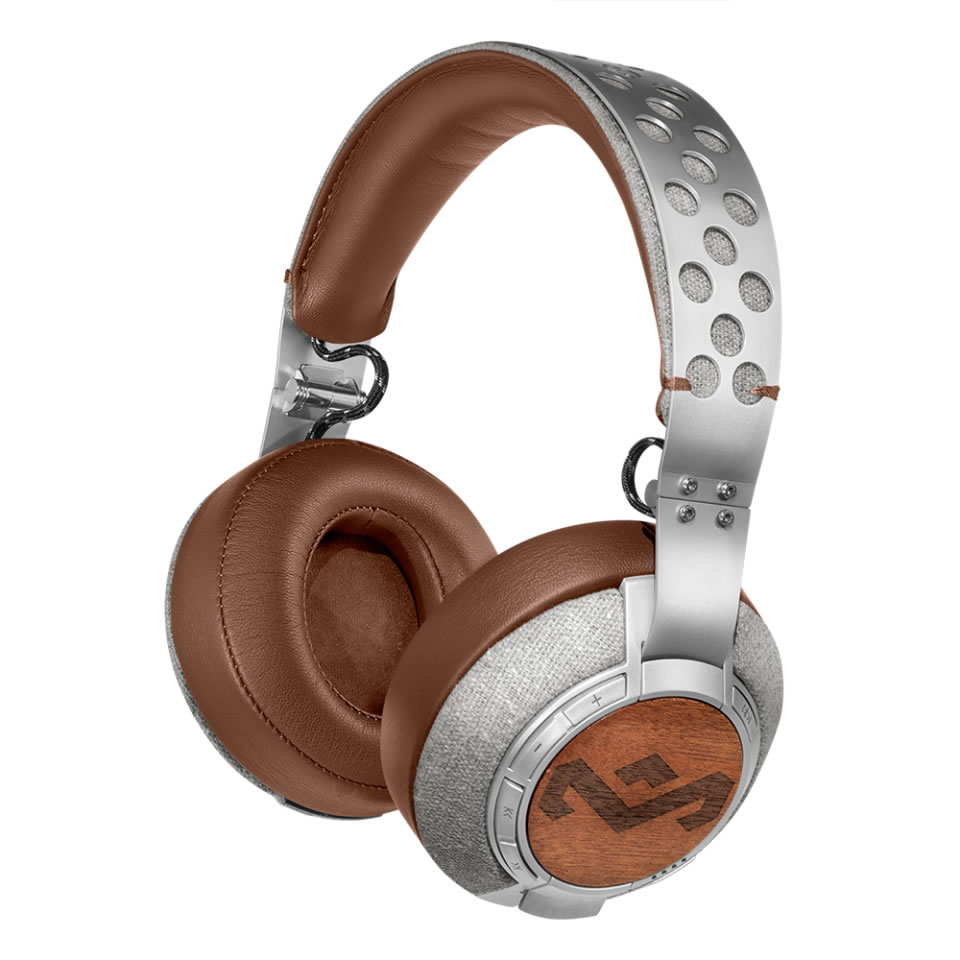
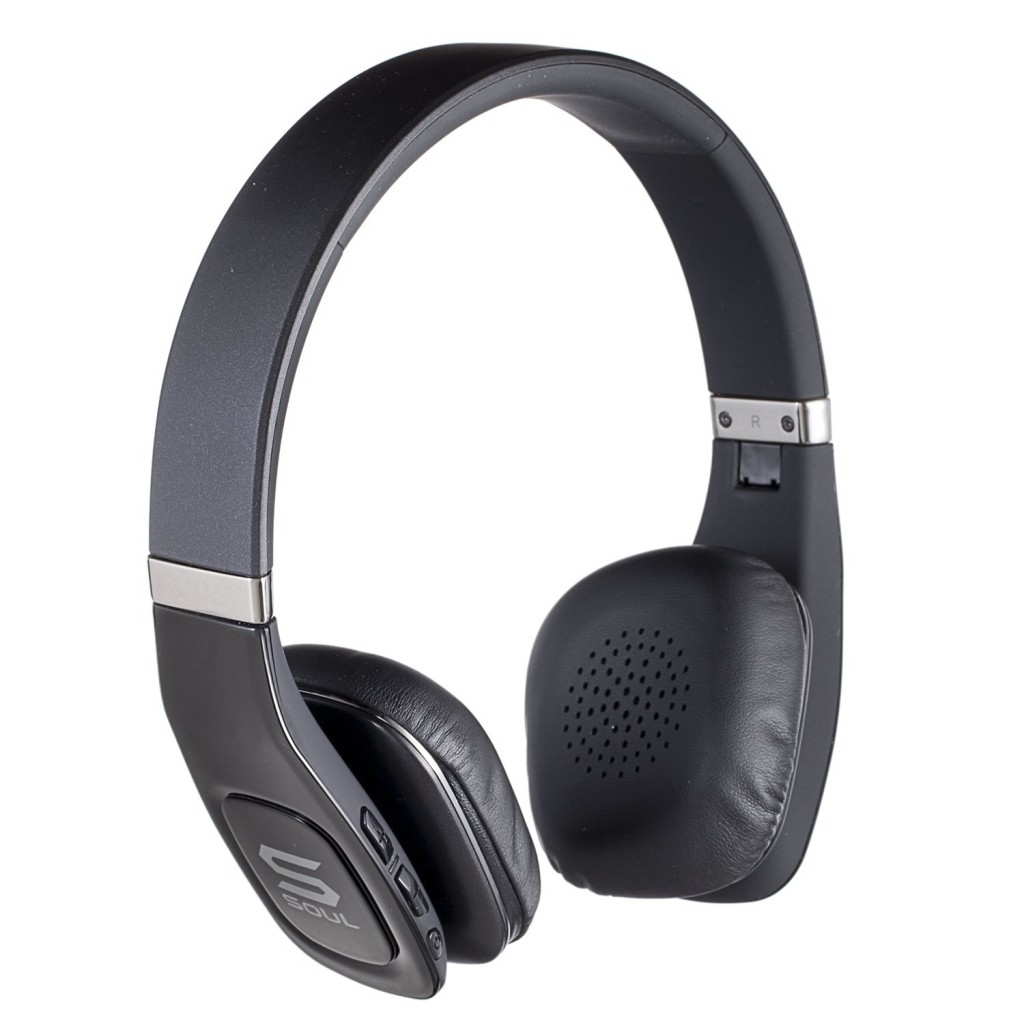


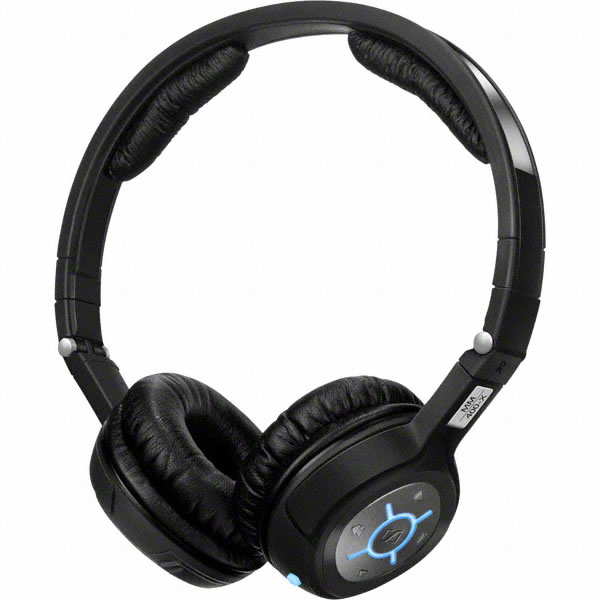
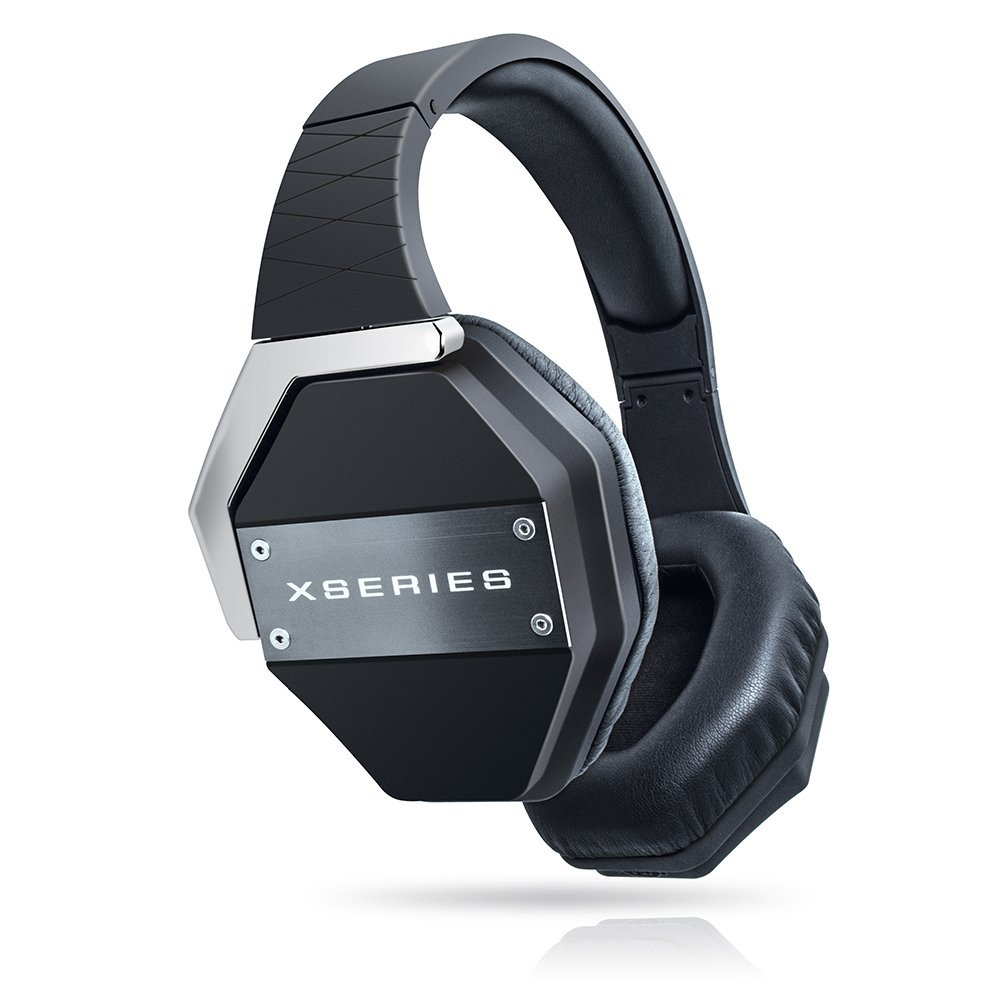
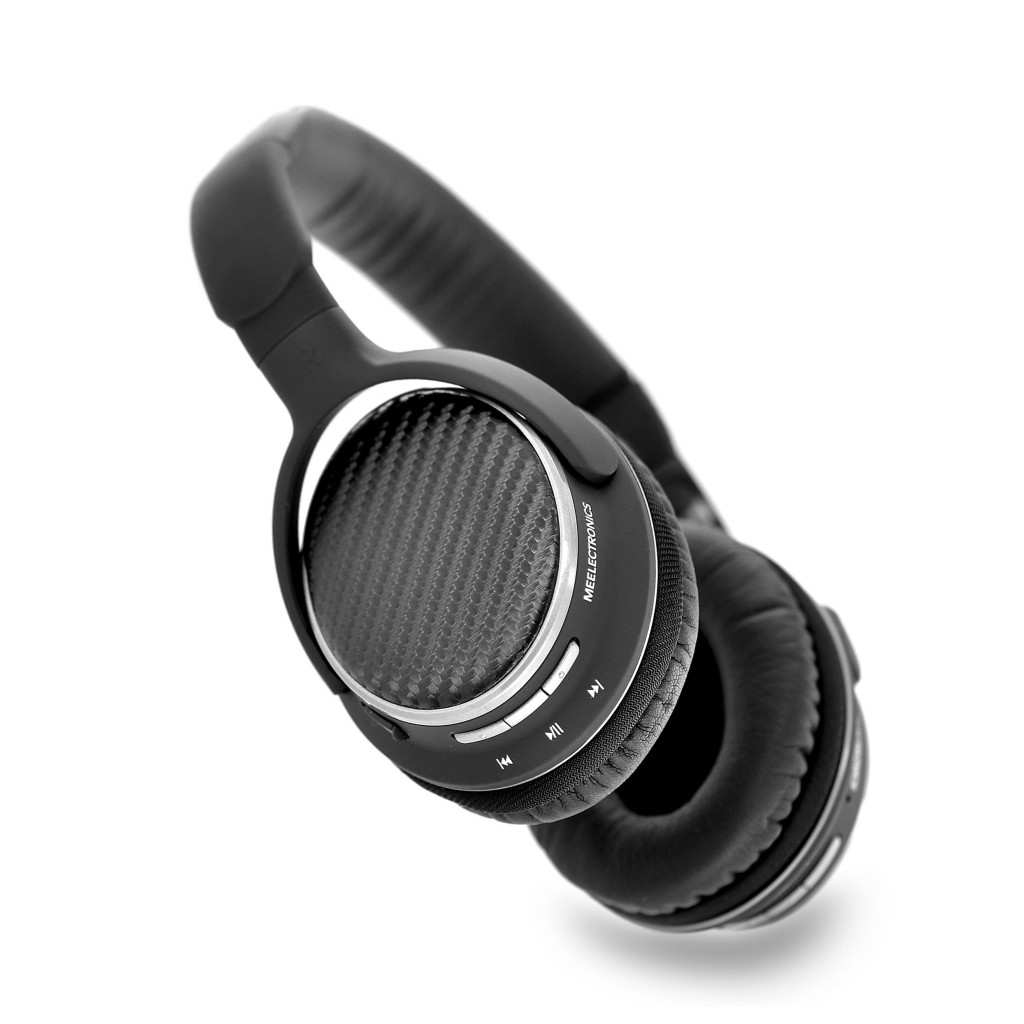
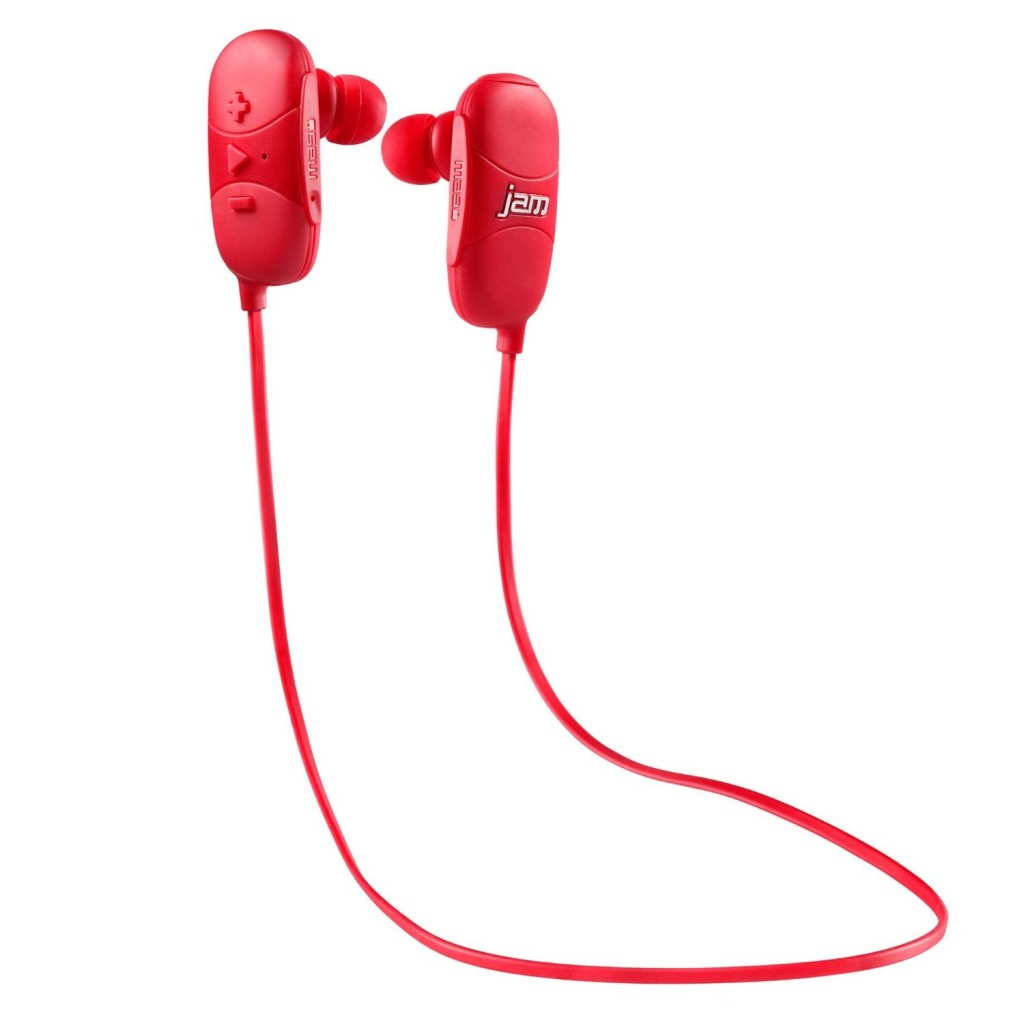
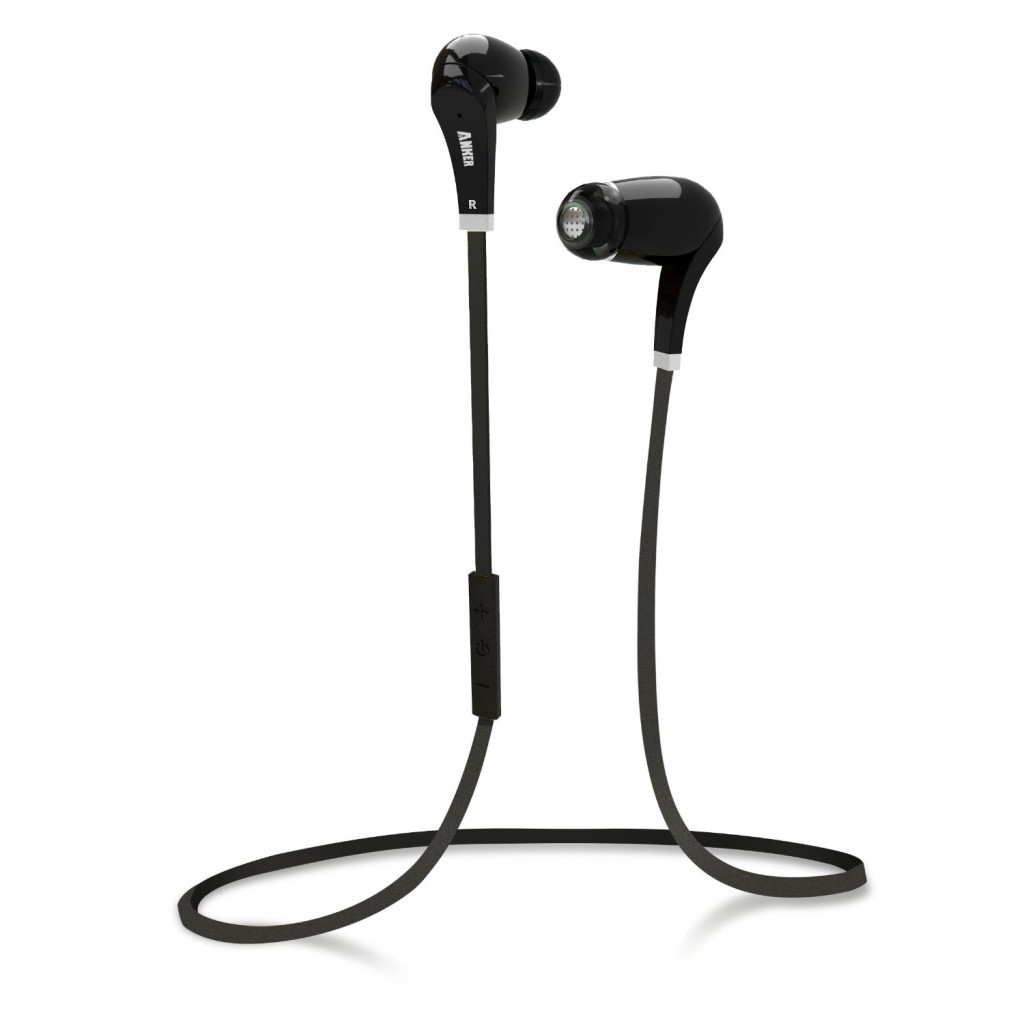
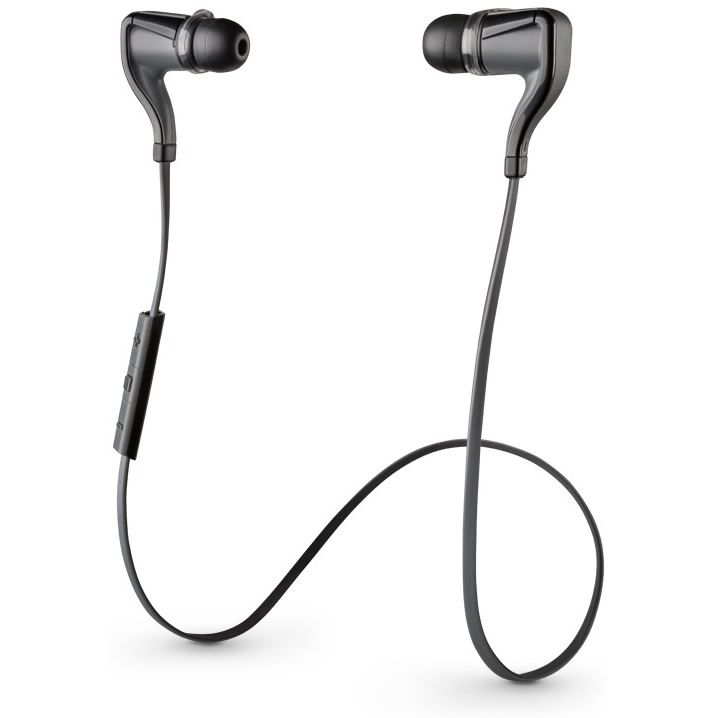
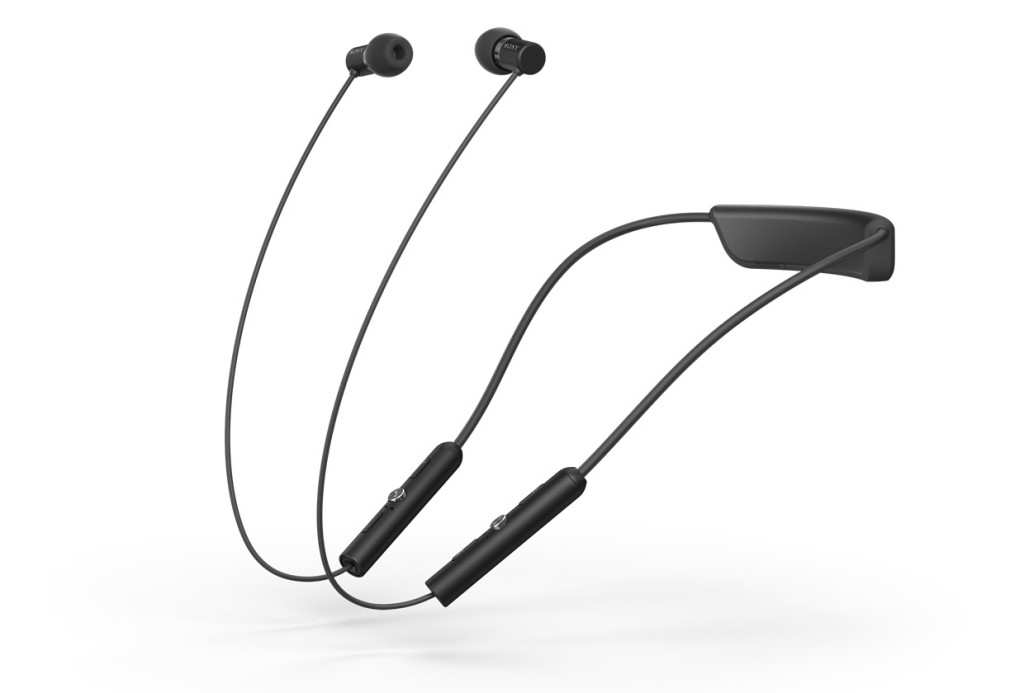



33 Responses
I’m not a big fan of using on- or over-ear headphones when working out, but if you don’t sweat much the SBH60 should be fine. It’s secure enough, at least when dry.
The bass is ok, just doesn’t have the best depth (which is the case with many on-ear headphones). You could certainly do worse.
hi joker, are sony’s sbh60 compatible for use in the gym? and is the bass really very subdued?
Rbh epsb. See my review on headfi. Better than be6i I have them both. Rbh epsb are my favorite items and I like them better than all my wired iems.
Thanks for that suggestion. I tried the SBH80 with an Ipad. The difference to an aptx-supporting device is noticable but for sure they still sound better than the bt-headphones I remember from a few years ago. I would probalby be happy if I didn’t know what I’m missing.
But it should be good enough until either Apple finally adds aptx or someone offers comparable AAC in-ears.
I am not familiar with the BE6i so I can’t really comment on those. The X7 Plus does support AAC and has absolutely no problems with bass quantity, but I don’t think it has the same level of fidelity as the SBH80.
Regarding AAC in general, see if you can conduct this experiment – you know what your SBH80 sounds like with aptX. Try it back to back on another device that does not support aptX and see how much of a difference it makes. In my experience, it’s relatively minor and won’t be a big deal for everyone, just like going from 320kbps mp3s to 256 or 192 kbps mp3s. I recommend doing this because have a feeling that whatever random AAC-supported in-ear you buy will most likely not sound as good as the SBH80 does even with SBC.
Hey,
thanks for the great article.
I tried different bt-headphones in the past years and overall I was really disappointed by all of them (price range from 50 to 300). I came to the conclusion that there is no way for bt-headphones to sound better than 30€ wired headphones. With the growing amount of aptx-headphones I decided to give bluetooth another try and tried your recommended sony sbh80. The good news: they are great! The bad news: I’ve to switch to an Iphone for a different reason soon and will lose aptx support because of this. I read your article about ‘Wireless fidelity’ (great too) and decided to go for headphones with AAC-Support because I don’t want to fall back to the bad old SBC. But I can’t find any decent In-Ears with AAC-Support. I had an Eye on http://www.optomausa.com/soundproduct/BE6i these but I found multiple reviews stating they have no bass at all. I your comments in different articles here I read about the MME Audio X7 (Plus) but I can’t find too much information about them. Besides there are not many AAC-In-Ears at all.
Am I overreacting on AAC? Any advice/recommendation?
Thanks for your help!
Maybe not for comfort as it’s not a very large headphone for over-ear so your ears will touch. I’ve tried some more comfortable ones like the Scosche over-ear and the Bluedio one.
But, for sound/battery/bluetooth specs I haven’t come across anything better to date. The battery on my unit lasted for ages whereas with my SBH80 I get nervous about battery life after two days.
6 months on, is the Matrix2 AF62 still the best ~90$? Priority list – Sound>Comfort>Compatibility>Battery
I’ve only tried the E3 briefly and thought it sounded very good with my VSonic GR07, but I didn’t have a sensitive balanced armature IEM like the VC1000 to try and see if it has any hiss or anything. Maybe some other reviews around the web will yield an answer to that one.
Haven’t tried the Elecom or the Noble unit but both look very promising.
Hi Joker, interesting to know such portable bluetooth receiver and amp. I’m looking for a solution to cutting wire with IEM as well. I’m currently using VSONIC VC1000. Between Elecom LBT-PAR500 and Creative E3, which will you recommend?
Obviously full judgment has to be reserved until I’ve tried the BTS (if such a chance arises), but so far I don’t see what makes it more compelling than the aptX receivers already on the market. There are some that are highly rated, like this Elecom: http://amzn.to/1IEJZXe . There are even some portable amps with aptX receiver functionality built in, including a few Creative Sound Blasters and this new Audio-Technica: http://amzn.to/1cbSY5T
Hey joker, I’ve been interested in cutting the wire with IEMs. What are your thoughts on the Noble BTS that was recently launched? I’m pretty excited for it but I’m waiting on reviews before I snatch one up myself. I’m hoping it can help IEMs make the wireless transition better or equal to how the MH1C went wireless in the SBH80.
Anyways I’m hoping to hear your impressions on the Noble BTS if you ever get your hands on one. Nice improvements to the site so far, keep it up! Also the EPH-100 you helped me settle on have been treating me very nicely so far.
I’ve been keeping an eye on this and the only Bluetooth IEM I’ve seen so far explicitly labeled with AAC support is the Meelectronics X7. All of the ones I’ve tried have had fairly fat nozzles, though. There was a Scosche one at CES that had narrower nozzles but it didn’t sound very good.
Disappointed that there was not one IEM with the ACC Bluetooth function for my workouts and bike rides with my iPhone 6. I was not only hoping for that but one that would even accommodate my very narrow ear canals like my wired Etymotic HF3s.
I hope to have more time for new wireless sets later this year.
Haven’t seen this particular one before but it looks a lot like their wired Atlas model, which I’ve tried and thought was quite good. Seems like a solid buy!
I recently got the MEElectronics Air-Fi Rumble (Link below) on Amazon and I’m really eager for them to arrive to give them a try. I was considering the Matrix 2 ones but sadly they were out of my budget, so I did a bit of digging, found those and looked very good, even more considering I like bass a lot, at first they were at 79.99, suddenly the price dropped to 59.99 and it was go time for me. (next choice in line was either MEElectronics Air Fi Venture, or Photive BTH3)
It’s a shame I didn’t get to see this article before (I had seen one last year for in ears), but I’m glad I see two MEElectronics on your list, both with great reviews, that makes me feel more comfortable with my choice. If you are ever able to review them that’d be great as well.
http://www.amazon.com/gp/product/B00PHZL2L4/ref=od_aui_detailpages01?ie=UTF8&psc=1
Has anyone listened to the af52 for comparison sake to the af62? The specs look similar, I was wondering if they were equal drivers with just different cosmetics and accessories.
Thanks!
I totally agree and think the time I’ve put into figuring out Bluetooth headphones so far has been well-spent. I’ll be paying closer attention to BT sets from now on and hopefully will have the time to build up a broader review base.
What was included here is pretty much all the wireless sets I had on hand or was able to borrow in time. I have tried maybe a dozen more wireless headphones and earphones, but didn’t feel any of them were so great that I should put the review on hold and track down a set for inclusion. I’m sure more and more will come along as the market keeps growing – I just hope I can find the time to keep up.
Thanks for the comprehensive table and reviews. This is something I look for to compare headphones, especially since my preference is bluetooth headphones. Personally it’s nice to see more obscure, lesser known brands like the Meelectronics on here, as I used to want the AF32s back in the day. Now that BT headphones are becoming a more major focus, I’m interested in the bigger brands as well. I’d like to see more reviews of brands like Beats, SMS, Bose, and the like. Surely, others would like to know how the bigger brands stack up, and offer a broader unbiased observation of what’s on the market, to improve consumer savviness. Though, reading some comments, I assume you’ve already tried sme of these brands and have excluded them. Far be it for me to tell you how to run you site, but having the optional reviews here will give people like me the means to make better buying decisions. After all, BT phones are becoming as much an investment as the phones & media players they’re made for. Anyway, thanks again for the info. Going to bookmark for future reference. keep up the great work!
From what I understand, there’s a lot that goes into range with Bluetooth. Class 2 devices like headphones have a set max power of 2.5mW and a typical range of 10m/30ft. However, in practice there are things that limit or increase the range – antenna size, design, and position within the headphone is obviously one, but it also varies with antenna size and position within the transmitter (phone, etc) and the environment. The ideal environment is enclosed so that signals can bounce off walls, but no furniture, bodies, etc. in the way to block the signal, and also has minimal interference from other wireless devices.
So yes, I suppose it’s possible for someone to only get 10 feet or so. I get 20 feet without walls in the way with my Azio USB PC adapter, a little more with my iPod Touch, and a little less with my phone (Nexus 5). It’s not as good as with most of the on/over-ear BT headphones I’ve tried, but since I have a pretty good idea of how far I can get, I’ve never had it drop/cut out unexpectedly.
Thanks joker, can you comment on the range of Sony SBH80 as well.
few reviews that I have read on Amazon mention that it doesn’t work if the phone is more than 3 meters away
Only briefly. I thought it was decent but not spectacular (only had wired earphones for comparison on me at the time). Definitely don’t have enough experience on it to really judge the sound or include it in this comparison.
Have you tried the Jabra Rox? I found that they sounded more detailed than the Backbeat 2 not sure about how they compare with Mic.
Corret.. already done all around Europe obviously mate..
Anyway I was joking.. no worries.. I know you care about all your followers.. 😉
I had no problems using any of the controls with my Android phone (nexus 5) and PowerAmp media player. Everything seems to work as intended. Biggest variation is that some sets have google voice (also Siri) access and some do not.
My experience is obviously very limited at this point – for in-ears, for instance, aside from the 4 mentioned here, the only ones I’ve tried briefly were the Jabra Rox and LG Tone, neither of which blew me away with sound quality. I have not heard the Stance S1+.
I would say the SBH80, BackBeat GO2, and even the Anker thing all can be called decently good-sounding (all of them would probably score a 7+ on my IEM SQ scale). I’m sure at this point the focus is more on reliability and making a good consumer product first (as it probably should be – just look at the Anker example).
And thanks, the table is a placeholder until the site gets revamped and I can make a dynamic one for Bluetooth sets. This also let me add in a few columns that don’t exist in the current database. I plan to implement both the sound sig and “recommended” columns in the future for everything, though I’ll have to find a designation for those neither-here-not-there ones than “yes” with an asterisk. Here it sort of made sense because you can just scroll down and see under which conditions they might be recommended.
Not sure I will waste time at the Sony booth this CES. The last time they had headphones as a focus was 2012, when the first XBA line came out.
Haha. Believe me, I read and appreciate all posts (and compliments :D). I just try not to reply “thanks” to each one individually because it makes my past comments harder to go through when I need to reference something.
In any case, thank you very much for reading and commenting! It is always appreciated.
I knew that this article wouldn’t be useful for everyone, but I also know you’ll share it with your friends when one of them needs a BT headset 🙂
The long awaited bluetooth throwdown is finally here! 🙂
– Look at the Matrix battery life! Do those playback buttons work in wireles mode with android?
– So, the SBH80 is the only decent IEM option available today. Is this because “sound quality” is not high on most manufacture’s wish-lists or due to tradeoffs/tech-limitations?
– None of these IEMs are truly wireless though, are they? I’m looking forward to the upcoming crop of truly wireless IEMs that also have a focus on fidelity, like the new “Earin” and “Aurisonic Auris”. I hope you get to review these too.
– Have you heard (or heard of) the Pendulumic Stance S1+. They claim to have audio quality as their main focus(few favorable review on Head-fi). 30 hour battery life, three listening modes etc look good too.
PS: Great job on the new table! (and the write-up of course). Hope to see the “Sound sig” and “Recommended” column in the other lists too.
PS2: I was let down by the (old) MDR10BT. I hope SOny doesn’t manage to evade you at CES this time round 😀 (I presume you are going?)
You didn’t say Thanks to my post 🙁
The fact that I prefer wired headphones & IEMs, doesn’t necessary means that I did not appreciate the great job you’ve done with this multi-review…
I told you that I love it…. as always.. being a deep Theheadphoniclist’s follower… cheers
Thanks!
I’ve tried the Revo and honestly didn’t like the sound. It’s extremely solid-feeling but for the price I didn’t think it was worth revisiting considering my focus on sound quality. Haven’t tried the MDR-10RBT at this point.
I think the wireless market will explode like the other headphone segments have, with everyone having not just one wireless can, but a full range. Should be even more solid options then (and even more work to figure out which ones those are).
Good choice!
Great review! My wife asked me what I wanted for Christmas, so the Sony SBH 80 it is!
Really good reviews as always, can you please consider reviewing Sony MDR-10RBT and Jabra Revo wireless too.
Very detailed multi-review… I appreciate. Even though I prefer the wired scenario, it’s a lovely comparisons. Congrats as always. Ditto